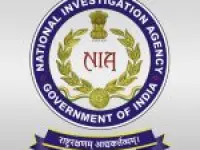
(Photo on X @BlindSquare)
Jammu and Kashmir: One of the most horrific terrorist attacks in a few decades, Pahalgam terror attack struck the very consciousness of the people of India. At least 28 people, mostly tourists, were killed in the gruesome incident, especially at a time when the government and top ministers, including Home Minister Amit Shah’s claim of normalcy in the valley.
It is analysed that the aim of the attackers were tourists, as they chose the peak sightseeing season in the region, when the meadows and Mughal gardens attract thousands of visitors to witness the spring. As a popular travel destination and one of the two routes to Amarnath cave, which attracts lakhs of pilgrims every year, the attackers’ target of the excursionists is likely to weaken the tourism sector in the wake of the terror cloud created by the latest bloodbath.
Read Also: After Pahalgam: A Look Back At The Deadliest Civilian Terror Strikes In Kashmir
According to Rauf Tramboo, president of the Travel Agents Association of Kashmir, the last few years saw growth in the tourism sector and the attack was a huge blow to it. He pointed out that they are already receiving queries on cancellations from businesses and consumer partners. Amid this backdrop, there are claims that the tourist inflow and the purported normalcy in the valley could have triggered the terror groups to carry out the deadliest attack targeting outsiders.
The government has promoted the tourist sector with several initiatives, and Srinagar recently hosted the third G20 tourism working group meeting, fueling local employment and businesses.
Has There been Normalcy In Kashmir Since Abrogation Of Article 370?
In 2022, the current chief minister of Jammu and Kashmir, Omar Abdullah, rejected claims that the valley is experiencing normalcy since the abrogating of Article 370.
While reacting to the killings of a KP employee and a police officer in twin attacks in Kashmir, he blamed the Centre, saying that targeted killings continue unabated. “Tourism is not normal, it’s a barometer of economic activity. Normalcy is the absence of fear, the absence of terror, the inability of militants to strike at will, the presence of democratic rule and by any yardstick you choose to use, Kashmir is far from normal today,” Abdullah tweeted in 2022.
In June 2024, nine people were killed after militants fired on a bus carrying Hindu pilgrims in Reasi district of Jammu. According to the police, the driver lost control after the firing, causing the bus to plunge into a gorge, leading to the causalities.
Read Also: Pahalgam Terror Attack: Muslim Horse Rider Shot Dead, Family Says He Was The Sole Breadwinner
In November last year, a crowded market was attacked in Srinagar Sunday market, injuring at least 12 civilians. The attackers threw grenades at the crowd, obviously targeting the civilians.
Who Is The Resistance Front, Which Claimed Responsibility For Pahalgam Attack?
An offshoot of the Lashkar-e-Taiba (LeT), The Resistance Front, has claimed responsibility for the Pahalgam terror attack soon after the incident. Emerged after the abrogation of Article 370, the group came into existence in the year 2019 as a proxy outfit of Lashkar-e-Taiba, a proscribed terrorist organisation. The terror group’s commander, Sheikh Sajjad Gul, has been classified as a terrorist under the Unlawful Activities Prevention Act (UAPA).
In 2024, the Government proscribed The Resistance Front for its involvement in online recruitment of youth for terrorist activities, facilitating infiltration of terrorists, and coordinating weapons and narcotics smuggling from Pakistan into Jammu and Kashmir.
According to an intelligence assessment, LeT’s top commander Saifullah Kasuri, alias Khalid, is suspected to be one of the plotters. Khalid is also the head of LeT’s Peshawar headquarters, and served on Jamaat-ud Dawa (JuD)’s Coordination Committee for Central Punjab Province.
Any Role For Pakistan In Pahalgam Attack?
Given the history of Pakistani terror groups carrying out attacks in India, especially during high-profile visits, there are claims that the Pahalgam followed the same pattern, indicating a possible Pakistani link. The high-profile foreign leaders visit can generate maximum international publicity, which the terrorists aim for. In the latest episode, the attack occurred as US Vice-President J D Vance was in India for an official trip.
In 2000, ahead of US President Bill Clinton’s visit, Pakistan-sponsored militants murdered 36 Sikh villagers in the Chittisinghpora village of Anantnag district in Jammu & Kashmir.
In 2002, a terrorist attack took place near Kaluchak in J&K when US Assistant Secretary of State for South Asian Affairs Christina B Rocca was visiting India. Militants attacked a Himachal Road Transport Corporation bus from Manali to Jammu and killed seven people, and then entered the family quarters of the Army and fired indiscriminately, killing 23 people.
However, Pakistan has rejected the allegations of involvement in the gruesome bloodbath, stating, “Pakistan has no connection with this.”
Pakistan’s defense minister, Khawaja Asif, said that there are “revolutions” in so-called Indian states, from Nagaland to Kashmir, in Chhattisgarh, Manipur, and the south, and these are not acts of foreign interference but local uprisings. He also described the violence as “home-grown” and part of a wider rebellion against India.
Read Also: 26 Killed In Pahalgam Terrorist Attack: 10 Points
Largest Attack Targeting Civilians After Mumbai 26/11
Tuesday’s attack on tourists is counted as the largest civilian attack since the 2008 Mumbai terror attack. In Jammu and Kashmir, the attack would be the biggest since the 2019 Pulwama incident, which targeted military vehicles, killing at least 40 CRPF personnel.













